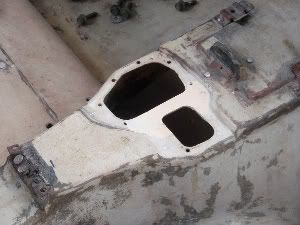I've had several people ask me about coloring of fiberglass for repairs - particularly for the older vettes with the white/cream colored glass.
I'm including a picture of a recent repair of my '63 console, where the shifter area had been cut out to accomodate a non-stock shifter.
I used a very small amount of resin dye from Tap plastics (beige color) without really attempting to color match since the area really can't be seen. The dyes are available in a number of colors (white, beige, black,etc). With a litttle dye mixing and matching, I'm sure a really good match could obtained for most fiberglass repairs.

I'm including a picture of a recent repair of my '63 console, where the shifter area had been cut out to accomodate a non-stock shifter.
I used a very small amount of resin dye from Tap plastics (beige color) without really attempting to color match since the area really can't be seen. The dyes are available in a number of colors (white, beige, black,etc). With a litttle dye mixing and matching, I'm sure a really good match could obtained for most fiberglass repairs.

Comment